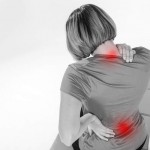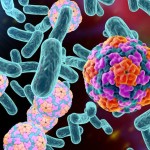Carpel Tunnel Syndrome
Carpal tunnel syndrome (CTS) is a relatively common condition that causes pain, numbness and a tingling sensation in the hand and fingers. The sensations develop gradually and then worsens during the night. They tend to affect the thumb, index finger, middle finger and half of the ring finger. It is generally caused by pressure on the median nerve in your wrist.
Symptoms
The three main symptoms are:
• Tingling
• Numbness
• Pain These symptoms are generally seen in the thumb, index finger, the middle finger and half of the ring finger.
Other symptoms include:
• A burning, prickling sensation (paraesthesia) in the hands similar to pins and needles
• Dry skin, swelling or changes in the skin color of the hand
• Weakness in the thumb when trying to bend it at a right angle, away from the palm (abduction)
• Weakness and wasting away (atrophy) of the muscles in the thumb
Causes
The symptoms of carpal tunnel syndrome (CTS) are caused by compression or pressure of the median nerve at the wrist.
Risks factors:
• Family history: If there is any history of CTS in the family, there is increased chances of CTS in the person
• Certain health conditions, such as diabetes and an underactive thyroid gland
• Pregnancy
• Certain injuries to the wrist: CTS can sometimes occur following a hand injury.
• Injuries such as sprains, fractures and crush injuries can cause swelling, placing pressure on the median nerve.
Diagnosis
Physical tests: Flexing the wrist for a minute or holding it elevated above the head for a minute are other commonly performed simple tests for CTS, and should stimulate the same pain, numbness or tingling in your hand if you have the condition.
Electromyography (EMG): It provides useful information about muscles if they are able to respond when a nerve is stimulated, indicating any nerve damage.
Treatments
Wrist Splints: A wrist splint is generally worn at night to support the wrist and keep it in the same position. The splint prevents the wrist from bending, which can place pressure on the median nerve and aggravate your symptoms.
Corticosteroids: Steroids help in increasing immunity of body. They produce chemicals that can help reduce inflammation.
Surgery: Surgery for CTS is known as carpal tunnel decompression or carpal tunnel release surgery. It is generally performed if the condition is persistent for 6 months. During surgery the roof of the carpal tunnel, known as the carpal ligament, is cut to reduce pressure on the median nerve in the wrist.
Preventions
Steps to prevent CTS are:
• Use hand and wrist movements that spread the pressure and motion evenly throughout your hand and wrist.
• Keep your arm, hand, and finger muscles strong and flexible.
• Perform stretching exercises
• Take frequent rest breaks, wear splints to keep wrists straight, and use correct posture and wrist position.
• Employers can develop programs in ergonomics, the process of adapting workplace conditions and job demands to the capabilities of workers.
References:
NHS
U S National Library of Science
National Institute of Neurogical Disorders and Stroke









